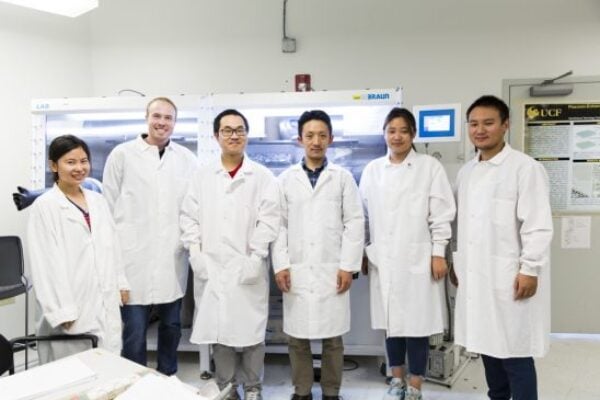
Boosting the life of lithium ion batteries to 5000 cycles
“We try to convert solar energy either to electricity or chemical fuels. We also try to convert chemical fuels to electricity. So, we do different things, but all of them are related to energy,” said assistant Professor Yang Yang in the NanoScience Technology Center and the Department of Materials Science and Engineering.
Yang’s group developed a battery cathode for lithium ion batteries using a thin-film alloy of nickel sulfide and iron sulfide. They were able to boost conductivity even more by making the cathode from a thin film of nickel sulfide-iron sulfide, then etching it to create a porous surface of microscopic nanostructures. These nanopores, or holey structures, greatly expand the surface area available for chemical reaction.
Tests show a battery with the nickel sulfide-iron sulfide cathode could be depleted and recharged more than 5,000 times before degrading, compared to 300 to 500 cycles for existing litium ion cells.
“This is really transformative thin-film technology,” said Yang.
Graduate student researchers in Yang’s lab also developed a new graphene-based catalyst for a high-efficiency metal-air cell. A nano-mesh structure in a zinc air battery boosted the cycle stability. The electrocatalyst is safer and more stable than the volatile compounds found in lithium batteries, and can function in rain, extreme temperatures and other harsh conditions. And without the need for precious metals, it can be manufactured more cheaply.
 If you enjoyed this article, you will like the following ones: don't miss them by subscribing to :
eeNews on Google News
If you enjoyed this article, you will like the following ones: don't miss them by subscribing to :
eeNews on Google News




